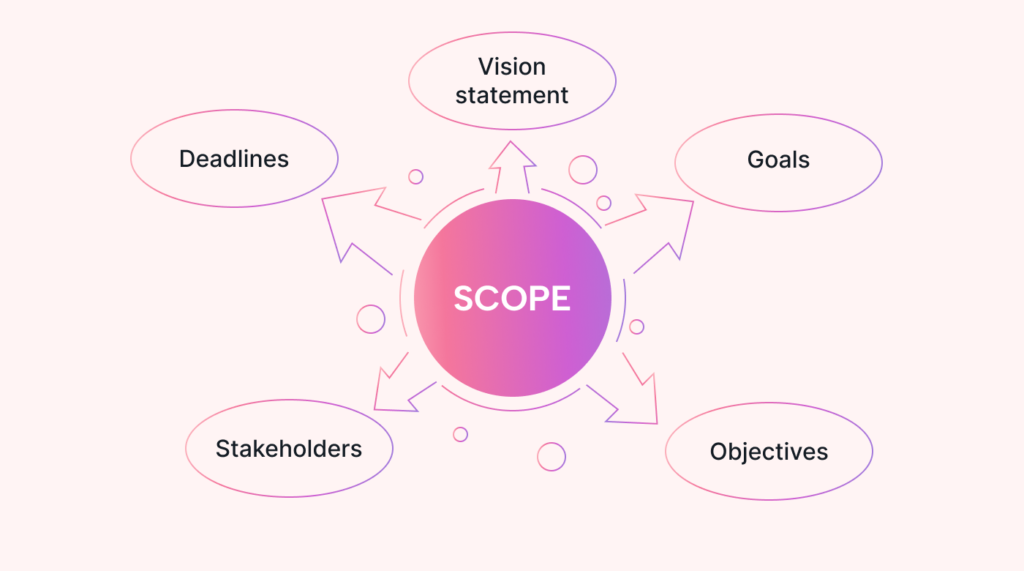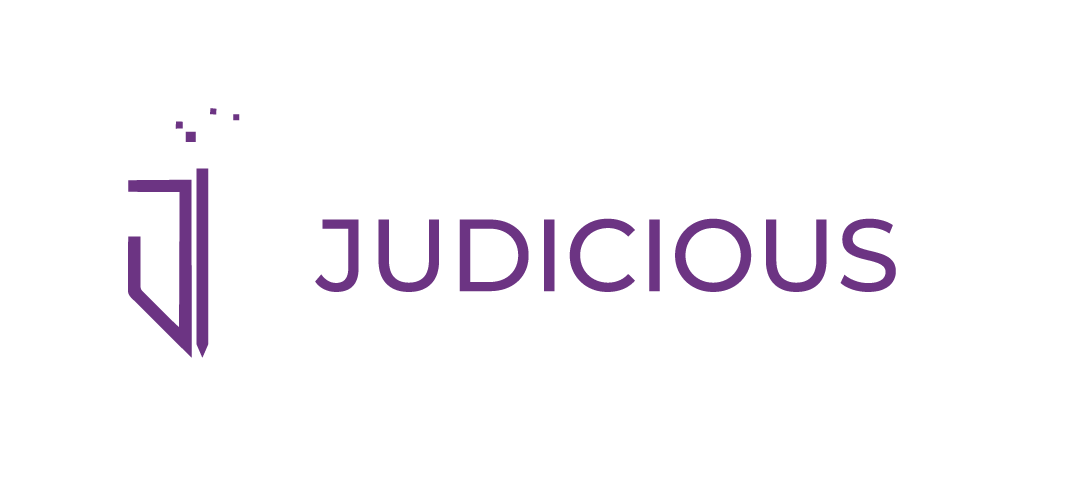Ten tips on how to run a successful Mastermind Group
Imagine being part of a dynamic, supportive community where diverse minds come together to achieve common goals. A Mastermind Group is a powerful tool for growth, innovation, and success, but it requires intentional leadership and facilitation to unlock its full potential.
By harnessing the collective energy and expertise of its members, a well-run Mastermind Group can become a hotbed of creativity, problem-solving, and accountability, propelling individuals toward their goals and beyond. But how do you create such a group? What are the essential ingredients for success?
In this guide, we’ll share the top ten tips for running a thriving Mastermind Group, from setting clear goals and expectations to fostering a culture of trust and collaboration. Whether you’re a seasoned facilitator or just starting out, these insights will help you create a transformative experience for your members and achieve remarkable results.
Topics
1. Define a Clear Purpose and Scope

Defining a clear purpose and scope is crucial for a successful Mastermind Group. It sets the tone and direction for the group, ensuring everyone is working towards a common goal. A clear purpose helps to focus discussions, keep the group on track, and prevent unnecessary tangents. It also helps to attract the right members and ensures everyone is committed to achieving the same objectives.
A well-defined scope outlines the specific areas the group will focus on, such as business growth, personal development, or industry-specific challenges. This clarity prevents confusion and ensures members know what to expect from the group. A clear purpose and scope also enable the group to establish a shared vision, which is essential for collaborative success.
By defining a clear purpose and scope, the group can create a sense of unity and direction, leading to more productive and effective discussions. It also helps to establish a sense of accountability, as members are more likely to take action towards a shared goal. A clear purpose and scope are the foundation of a successful Mastermind Group, setting the stage for meaningful connections, valuable insights, and collective growth.
2. Choose the Right Members

Selecting the right members is a critical aspect of building a successful Mastermind Group. The ideal members are those who share similar goals, values, and a willingness to learn and grow. They should be motivated, committed, and open-minded, with a positive attitude towards collaboration and feedback. Members should also have a diverse range of skills, experiences, and perspectives to bring unique insights and ideas to the table.
When choosing members, consider their level of expertise, their willingness to share knowledge, and their ability to provide constructive feedback. It’s also essential to ensure that members are at a similar stage in their personal or professional journey, so they can relate to each other’s challenges and goals. A well-curated group of members will create a dynamic, supportive, and stimulating environment that fosters growth and success.
The right members will not only contribute to the group’s success but also benefit from the collective knowledge, experience, and support. They will be motivated to take action, share their progress, and learn from others. By choosing the right members, the group can establish a strong foundation for meaningful connections, valuable insights, and collective growth.
3. Set a Consistent Meeting Schedule

Setting a consistent meeting schedule is vital for a successful Mastermind Group. Regular meetings maintain momentum, encourage accountability, and provide a structured environment for discussion and collaboration. A consistent schedule helps members plan and prioritize their time, ensuring they can commit to the group’s activities. It also allows the group to establish a rhythm, making it easier to stay focused and motivated.
The meeting schedule should be realistic, taking into account members’ busy lives and time zones. It’s essential to choose a frequency that works for everyone, whether it’s weekly, bi-weekly, or monthly. The schedule should also include a clear agenda, time limits, and a facilitator to keep discussions productive and on track. By setting a consistent meeting schedule, the group can create a sense of routine, stability, and commitment, leading to more effective and productive discussions.
A consistent meeting schedule also helps to build trust and rapport among members. It provides a dedicated space for members to share their progress, challenges, and insights, fostering a sense of community and support. By committing to a regular schedule, members can rely on each other for guidance, encouragement, and motivation, leading to a more successful and fulfilling experience.
4. Create a Safe and Supportive Environment

Creating a safe and supportive environment is essential for a successful Mastermind Group. Members need to feel comfortable sharing their thoughts, ideas, and challenges without fear of judgment or criticism. A safe environment encourages open communication, active listening, and constructive feedback, leading to meaningful connections and valuable insights. It’s crucial to establish a culture of respect, empathy, and trust, where members feel valued and supported.
To create a safe environment, the group should establish clear guidelines and expectations, such as confidentiality and respect for differing opinions. The facilitator should also set the tone by promoting a positive and inclusive atmosphere. Members should be encouraged to share their thoughts and feelings, and active listening should be practiced to ensure everyone is heard and understood. By creating a safe and supportive environment, the group can foster a sense of community, build trust, and encourage open communication.
A safe and supportive environment also allows members to be vulnerable and share their challenges, which is essential for growth and learning. It enables members to receive constructive feedback, guidance, and support, helping them to overcome obstacles and achieve their goals. By creating a safe space, the group can promote a culture of openness, honesty, and collaboration, leading to a more successful and fulfilling experience.
5. Establish a Structured Agenda

Establishing a structured agenda is crucial for a successful Mastermind Group. A clear agenda ensures that meetings are productive, focused, and efficient, allowing members to make the most of their time. It helps to prioritize discussions, allocate time for each topic, and keep the group on track. A structured agenda also enables members to prepare and come prepared to discuss specific topics, leading to more meaningful and valuable insights.
A well-structured agenda should include time for introductions, goal-setting, progress updates, and discussions on specific topics. It should also allow for flexibility and adjustments as needed. The facilitator should ensure that the agenda is followed, and discussions stay focused and productive. By establishing a structured agenda, the group can create a sense of organization, efficiency, and effectiveness, leading to more successful and fulfilling meetings.
6. Encourage Active Listening and Feedback

Encouraging active listening and feedback is vital for a successful Mastermind Group. Active listening ensures that members fully understand and absorb the information shared, while feedback provides valuable insights and guidance. It’s essential to create a culture where members feel comfortable sharing their thoughts and opinions, and where feedback is given and received constructively.
To encourage active listening and feedback, the facilitator should model the behavior and encourage members to do the same. Members should be encouraged to ask questions, clarify points, and seek feedback. The group should also establish a feedback process, where members can provide constructive feedback on ideas, progress, and goals. By encouraging active listening and feedback, the group can foster a culture of openness, honesty, and collaboration, leading to more effective and productive discussions.
7. Emphasize Accountability and Goal-Setting

Emphasizing accountability and goal-setting is crucial for a successful Mastermind Group. Setting clear goals and expectations helps members stay focused and motivated, while accountability ensures that members take action and make progress. It’s essential to establish a culture where members are committed to achieving their goals and are held accountable for their progress.
To emphasize accountability and goal-setting, the group should establish a goal-setting process, where members set specific, measurable, and achievable goals. The group should also establish a progress tracking system, where members report on their progress and receive feedback and guidance. By emphasizing accountability and goal-setting, the group can create a sense of responsibility, motivation, and achievement, leading to more successful and fulfilling outcomes.
8. Leverage Diverse Perspectives and Expertise

Leveraging diverse perspectives and expertise is essential for a successful Mastermind Group. A diverse group of members brings unique experiences, skills, and knowledge, leading to more innovative and effective solutions. It’s crucial to create a culture where members feel comfortable sharing their perspectives and expertise, and where everyone’s input is valued and respected.
To leverage diverse perspectives and expertise, the group should encourage members to share their experiences, skills, and knowledge. The facilitator should also ensure that all members have an opportunity to contribute and share their thoughts. By leveraging diverse perspectives and expertise, the group can foster a culture of collaboration, innovation, and collective growth, leading to more successful and fulfilling outcomes.
9. Foster a Culture of Continuous Learning

Fostering a culture of continuous learning is vital for a successful Mastermind Group. A culture of learning encourages members to seek knowledge, share experiences, and develop new skills, leading to personal and professional growth. It’s essential to create a culture where members feel comfortable asking questions, seeking guidance, and sharing their knowledge and expertise.
To foster a culture of continuous learning, the group should establish a learning process, where members can share resources, best practices, and new knowledge. The group should also encourage members to seek feedback, guidance, and support, and provide opportunities for members to learn from each other. By fostering a culture of continuous learning, the group can create a sense of growth, development, and achievement, leading to more successful and fulfilling outcomes.
10. Evaluate Progress and Celebrate Successes

Evaluating progress and celebrating successes is crucial for a successful Mastermind Group. Regular evaluation helps the group stay on track, identify areas for improvement, and make adjustments as needed. Celebrating successes acknowledges members’ achievements, motivates them to continue, and reinforces the group’s purpose and goals.
To evaluate progress and celebrate successes, the group should establish a progress tracking system, where members report on their progress and receive feedback and guidance. The group should also celebrate members’ successes, whether big or small, and recognize their achievements. By evaluating progress and celebrating successes, the group can create a sense of accomplishment, motivation, and fulfillment, leading to a more successful and fulfilling experience.
Conclusion
Building a successful Mastermind Group requires a clear purpose and scope. Choose the right members and set a consistent meeting schedule. Create a safe and supportive environment with a structured agenda. Encourage active listening and feedback, and emphasize accountability and goal-setting. Leverage diverse perspectives and expertise, and foster a culture of continuous learning. Evaluate progress and celebrate successes to create a dynamic and stimulating environment that fosters growth, learning, and success.
FAQs
What is the purpose of a mastermind group?
A mastermind group is a group of people that are determined to meet their individual goals, who share knowledge and experience with each other and help solve problems and develop ideas for success.
How do I join a mastermind group?
Research and identify groups that align with your professional or personal goals. Reach out to the group organizer or members to express your interest and inquire about the joining process.
What are some effective meeting formats for a mastermind group agenda?
Effective meeting formats for a mastermind group agenda include hot seat sessions, goal setting exercises, accountability check-ins, and facilitated discussions on relevant topics.
How do I effectively run a mastermind group meeting?
To effectively run a mastermind group meeting, it’s essential to establish a clear meeting agenda, maintain a structured format, ensure equal participation from all members, and designate a facilitator to keep the discussion focused and on track.
What are the benefits of being part of a mastermind group?
Mastermind groups can give you honest feedback, help hold you accountable, and celebrate your success. They build synergy and help reduce the learning curve.
What are some optimal tools for facilitating effective mastermind group sessions?
Optimal tools for facilitating effective mastermind group sessions include video conferencing platforms, project management software for tracking goals and progress, online forums or group messaging apps for ongoing communication, and productivity tools for collaborative problem-solving and brainstorming.
How do I set the agenda for a mastermind group meeting?
When setting the agenda for a mastermind group meeting, it’s important to consider the specific needs and goals of the group members, allocate time for each agenda item, seek input from all members, and prioritize topics that align with the overall mission and objectives of the group.
What does the structure of a mastermind group meeting look like?
The structure of a mastermind group meeting typically involves an opening check-in or icebreaker, followed by individual member updates, hot seat sessions, goal-setting and accountability discussions, and a closing reflection or takeaway segment.
How do I ensure effective participation from all members during a mastermind group meeting?
To ensure effective participation from all members during a mastermind group meeting, the group leader or facilitator establishes ground rules for communication and engagement, encourages active listening, and allocates specific time slots for each member to share their challenges, goals, and ideas with the rest of the group.

